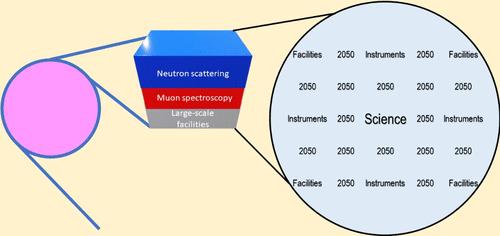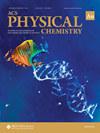2050 年代中子散射和μ介子能谱学的未来展望
IF 3.7
Q2 CHEMISTRY, PHYSICAL
引用次数: 0
摘要
中子散射和μ介子光谱学是一种利用亚原子粒子了解材料的技术,其能量(μeV 到数十 eV)、长度(埃到厘米)和时间(阿秒到小时)尺度范围很广。这些方法被广泛用于研究凝聚相材料,涉及物理、化学、生物、工程和文化遗产等领域。在本《视角》中,我们将考虑三个问题:(i) 2050 年代是否仍然需要中子散射和μ介子光谱学? (ii) 2050 年代产生中子和μ介子束的技术可能是什么样的? (iii) 2050 年代将有哪些应用?总体而言,2050 年代的中子/μ介子生态系统的容量将小于现在,但由于功率源略 高、仪器和数据分析更好,其能力将更强。本文章由计算机程序翻译,如有差异,请以英文原文为准。

A Vision for the Future of Neutron Scattering and Muon Spectroscopy in the 2050s
Neutron scattering and muon spectroscopy are techniques that use subatomic particles to understand materials across a wide range of energy (μeV to tens of eV), length (Å to cm) and time (attosecond to hour) scales. The methods are widely used to study condensed phase materials in areas that span physics, chemistry, biology, engineering and cultural heritage. In this Perspective we consider three questions: (i) will neutron scattering and muon spectroscopy still be needed in the 2050s? (ii) What might the technology to produce neutron and muon beams look like in the 2050s? (iii) What will be the applications in the 2050s? Overall, the neutron/muon ecosystem in the 2050s will have less capacity than now, but greater capability because of the somewhat higher power sources, better instrumentation and data analysis.
求助全文
通过发布文献求助,成功后即可免费获取论文全文。
去求助
来源期刊
CiteScore
3.70
自引率
0.00%
发文量
0
期刊介绍:
ACS Physical Chemistry Au is an open access journal which publishes original fundamental and applied research on all aspects of physical chemistry. The journal publishes new and original experimental computational and theoretical research of interest to physical chemists biophysical chemists chemical physicists physicists material scientists and engineers. An essential criterion for acceptance is that the manuscript provides new physical insight or develops new tools and methods of general interest. Some major topical areas include:Molecules Clusters and Aerosols; Biophysics Biomaterials Liquids and Soft Matter; Energy Materials and Catalysis

 求助内容:
求助内容: 应助结果提醒方式:
应助结果提醒方式:


